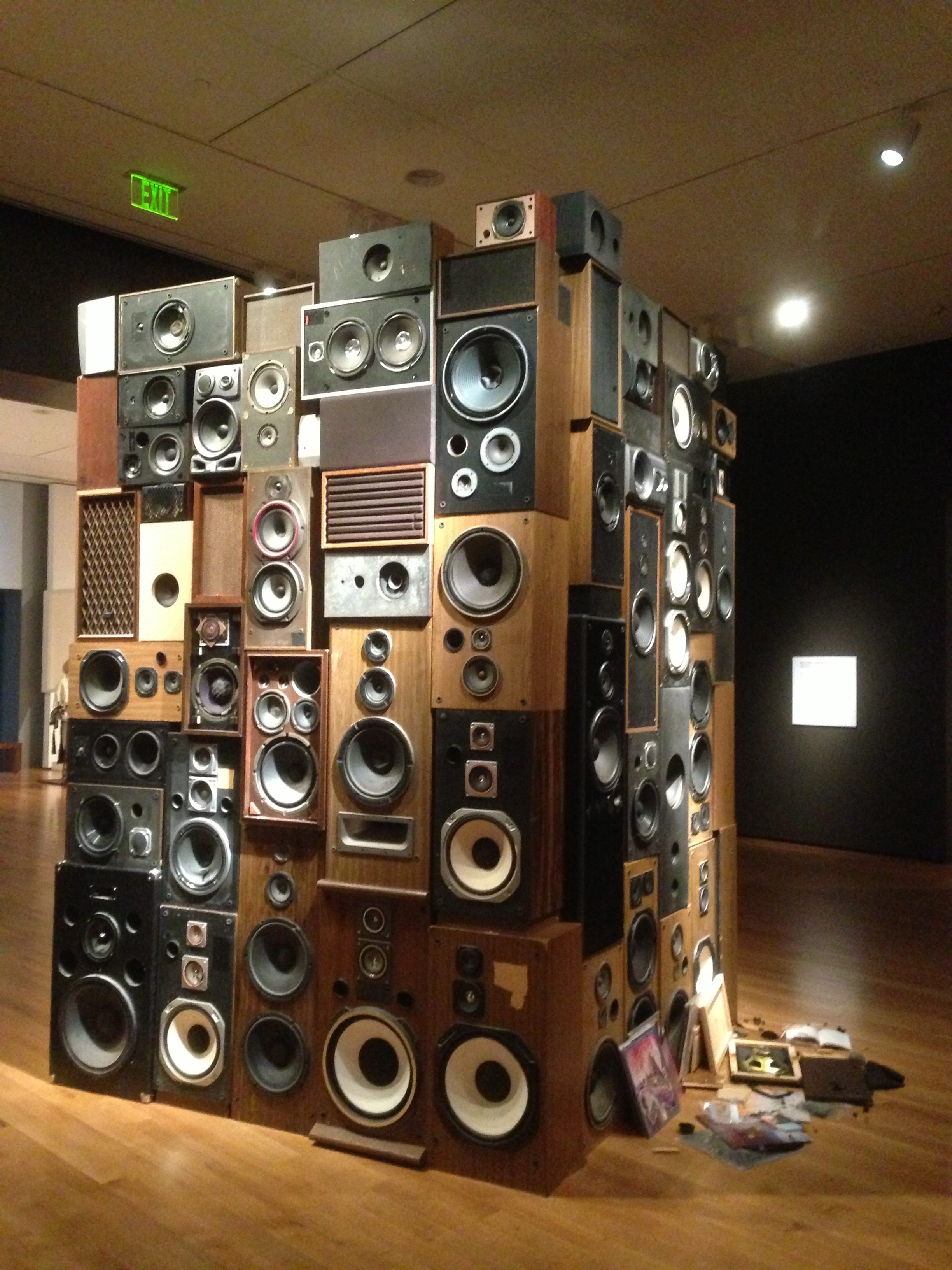Opened ahead of SAM’s big new Peru show, and located just outside those treasure-filled galleries, is a mountain of scrap, perhaps the cheapest thing in the whole museum. Visiting artist William Cordova built the edifice, called machu picchu after dark (pa’ victoria santa cruz, macario sakay y aaron.dixon) 2003–2014, from over 200 clunky old stereo speakers, the type of chipped, veneer-covered boxes that now pile up unwanted at Goodwill.
The Peruvian-born artist, long based in Miami, is referring back to the glory days of vinyl and album rock (a few LPs are scattered on the floor), when baby boomers piled huge stereo systems into their tiny dorm rooms. Today, of course, mp3s and smartphones have made such hi-fi connoisseurship obsolete. Music is portable, not monumental. And that, partly, is the point of machu picchu. The fabled city, featured in the main SAM exhibition, was built by the Inca in the 15th century, faded from memory during the Spanish colonial era, then was “discovered” (i.e. rediscovered) in 1911.
Cordova’s mini-mountain is about 15 feet high; it’s less a tower than a large stump. Bits of sawdust and musical detritus give the thing a forlorn aspect. Nobody wants these speakers any more; nobody listens to music that way. The “night” of the piece is like the historical night that descended on Machu Picchu, like amnesia. The indigenous old customs were long forgotten; stones were carted away; the jungle took back the precisely leveled altars that once had such sacred meaning. Were there songs and music during the old rituals and human sacrifices? No one knows. They fell into silence, like Cordova’s mute speakers. Seattle Art Museum, 1300 First Ave., 654-3121, seattleartmuseum.org. $11–$17. 10 a.m.–9 p.m. Thurs., 10 a.m.–5 p.m. Wed., Fri., Sat., & Sun. Ends Jan. 19.





